Every now and then, breakthrough in manufacturing technology happens and opens up new possibilities. Thanks to 3D-printing, novel structures like thin-walled features (previously thought to be impossible to fabricate) are now possible and helping mechanical designer like me develop parts with high stiffness to weight ratio. Today, this article will briefly explore why thin wall structures are underrated, why they are great for product design and a simple case study.
Before the advent of 3D-printing, the only reliable mean of manufacturing components is through CNC milling. Starting from a block, materials are slowly carved away to form required features. It’s takes much effort to carve out 90% of the stock to form thin wall structures, neither is it economical to do so. Furthermore, residual stresses from CNC milling easily warps thin structures. Perhaps thin wall structures are nothing new but there just no viable manufacturing techniques to realize those thin structures.
Thin wall structures have a clear advantage in high stiffness, high strength but low weight application, for example a 6DOF robotic arm, aerospace or automobiles. While thin walls by themselves are rather flimsy, they can be strong when they are cleverly arranged through design.

So today this article, it’s really about how to first identify the stresses going into your component. Then secondly, start putting in thin walls to bear those structure and then thirdly, reinforce those thin wall to stiffness and strengthen it to prevent buckling. And we are going to use some examples from my 6DOf robotic as examples.
The first step to designing effective thin wall structures is through identifying the stress going through the component. You can start by asking where are the part constrained, there are the contact points. Does the contact points experience pushing (compressive stress) or pulling (tensile stress)? And are there any imbalance in forces that create moments? And we are going to use some examples from my 6DOf robotic as example.
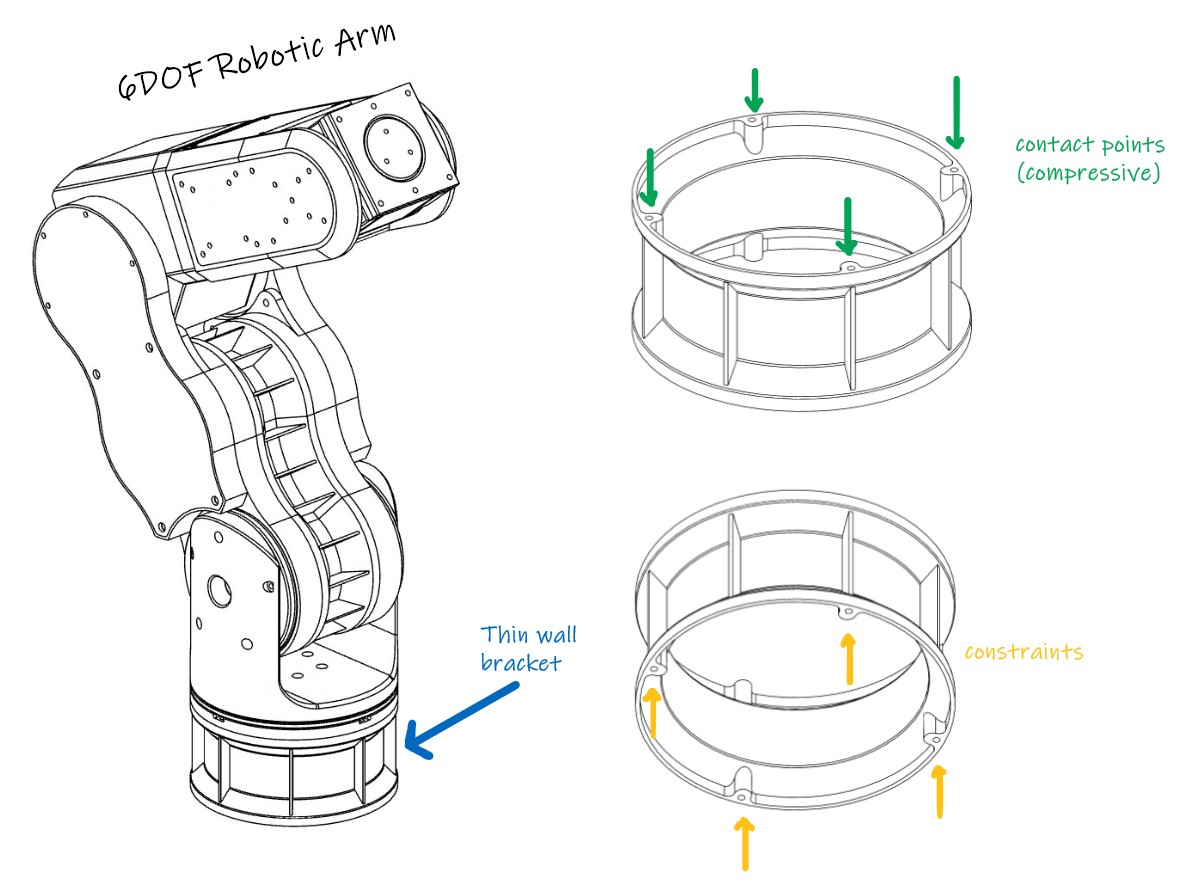
Once the stresses are identified, we can start by placing a thin wall where forces are applied on the edges. In this case, we will create a ring of thin wall with 1.5mm wall thickness. Now while this ring of thin wall is fairly stiff along it’s axis but it is rather flimsy when forces are applied to it’s side.
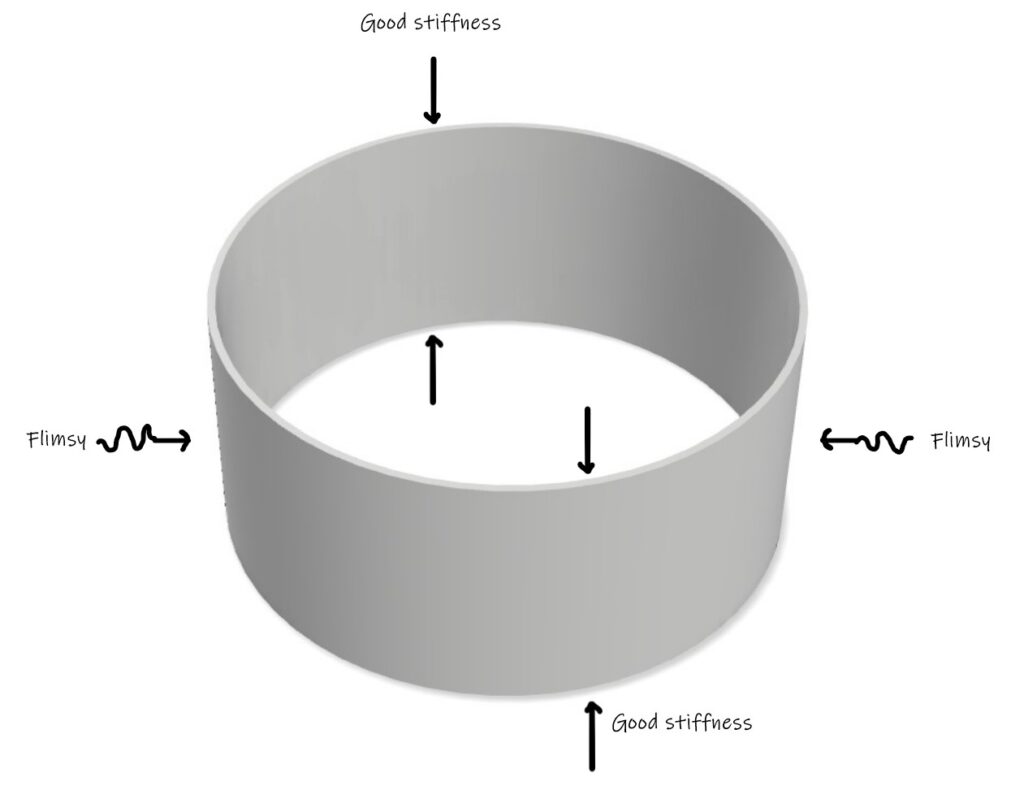
We can deal with this flimsy-ness by adding a horizontal wall along it’s internal curvature. It looks great and will definitely work in stiffening the circular thin structure. However, we are going to use 3D-printing to fabricate this structure and all the horizontal walls are overhangs and requires large amount of support structures. Support structures does not add value and takes up too much time to remove, it would be ideal if the structure is designed to have little support structure.
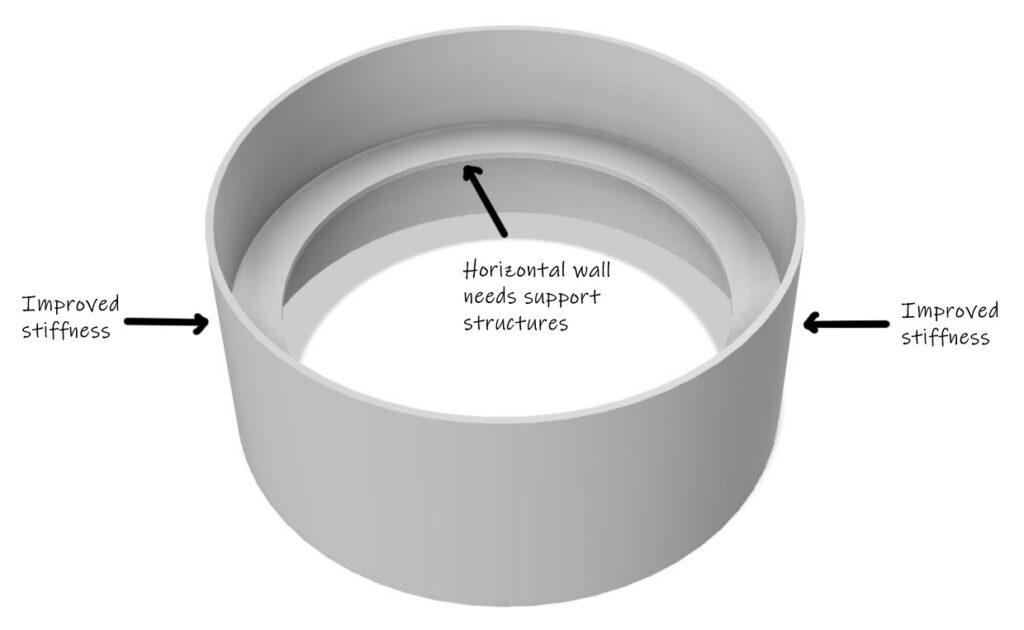
To avoid overhangs, we can slant the horizontal walls by 45 degrees which will work just as fine. We will slant it back for it to merge with the top rim. We are going to add a few more vertical thin wall to strengthen it further. Lastly, we are going to add in some screw holes to screw down different components to the thin wall bracket. Finally, we have completed the design.
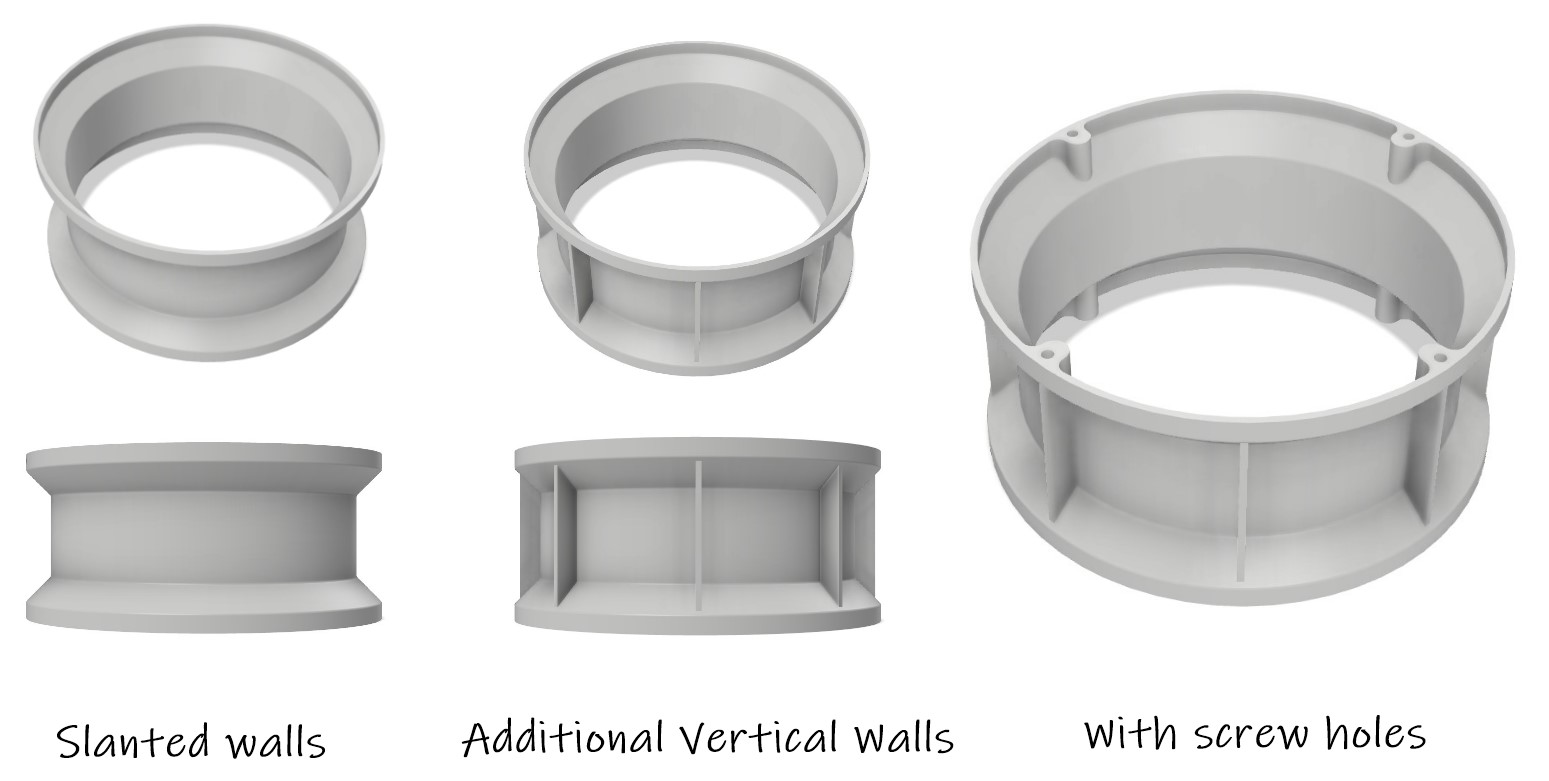
Thin wall structures are underrated and i hope that this article has raise awareness by it. it might have been thought of before but back then manufacturing technology had no matured. but given that we have 3dprinting, thin wall structures can be amazing features to have when designing light weight structures with great strength.

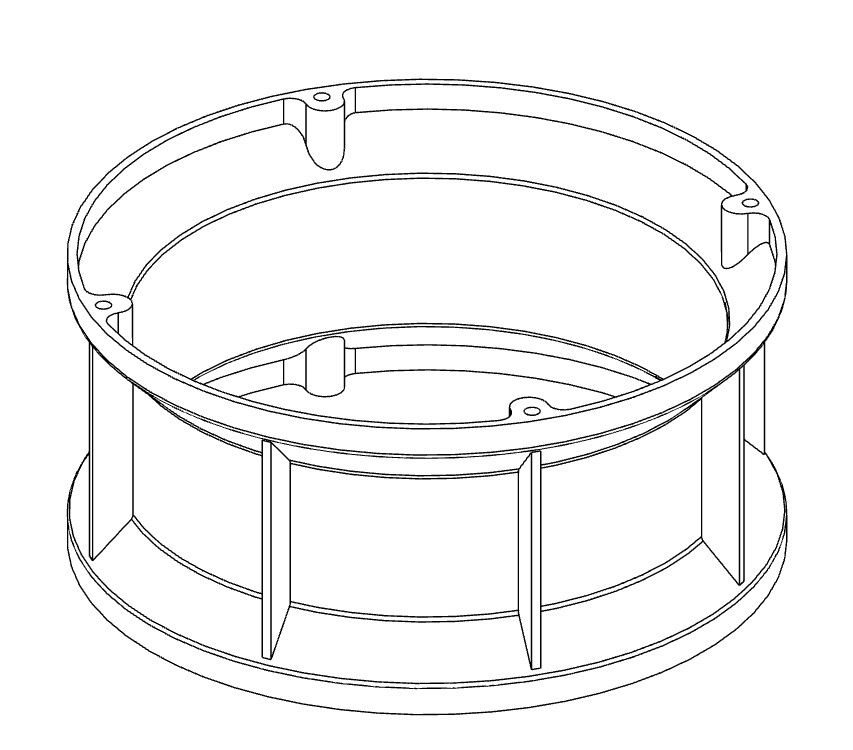
2 comments
Nicely explained. Do you have a cad file to share as an example?
Hi Paul,
Thanks for your kind words. Sounds like a great suggestion. I ought to upload them on the article too.
If you are interested in cycloidal drives, I have wrote a more complete tutorial on cycloidal drives, you can download the design files here https://www.ewhiteowls.com/2022/02/the-ultimate-guide-to-design-cycloidal-drives-the-beating-heart-of-robotic-arms/
Comments are closed.